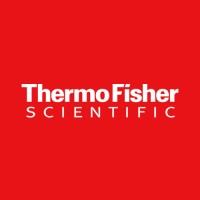IgM / Brilliant Ultraviolet 737 / SA-DA4
Product Details
| Description | IgM Monoclonal Antibody (SA-DA4), Brilliant Ultra Violet™ 737, eBioscience™ | |
|---|---|---|
| Conjugate | Brilliant Ultraviolet 737 | |
| Clone | SA-DA4 | |
| Target Species | Human | |
| Applications | FC | |
| Supplier | Thermo Fisher Scientific | |
| Catalog # | Sign in to view product details, citations, and spectra | |
| Size | ||
| Price | ||
| Antigen | ||
| Host | ||
| Isotype |
About IgM
Immunoglobulins (Ig) are the antigen recognition molecules of B cells. An Ig molecule is made up of 2 identical heavy chains and 2 identical light chains (see MIM 147200) joined by disulfide bonds so that each heavy chain is linked to a light chain and the 2 heavy chains are linked together. Each Ig heavy chain has an N-terminal variable (V) region containing the antigen-binding site and a C-terminal constant (C) region, encoded by an individual C region gene, that determines the isotype of the antibody and provides effector or signaling functions. The heavy chain V region is encoded by 1 each of 3 types of genes: V genes (see MIM 147070), joining (J) genes (see MIM 147010), and diversity (D) genes (see MIM 146910). The C region genes are clustered downstream of the V region genes within the heavy chain locus on chromosome 14. The IGHM gene encodes the C region of the mu heavy chain, which defines the IgM isotype. Naive B cells express the transmembrane forms of IgM and IgD (see IGHD; MIM 1471770) on their surface. During an antibody response, activated B cells can switch to the expression of individual downstream heavy chain C region genes by a process of somatic recombination known as isotype switching. In addition, secreted Ig forms that act as antibodies can be produced by alternative RNA processing of the heavy chain C region sequences. Although the membrane forms of all Ig isotypes are monomeric, secreted IgM forms pentamers, and occasionally hexamers, in plasma (summary by Janeway et al., 2005).[supplied by OMIM, Aug 2010]
Immunoglobulins (Ig) are the antigen recognition molecules of B cells. An Ig molecule is made up of 2 identical heavy chains and 2 identical light chains (see MIM 147200) joined by disulfide bonds so that each heavy chain is linked to a light chain and the 2 heavy chains are linked together. Each Ig heavy chain has an N-terminal variable (V) region containing the antigen-binding site and a C-terminal constant (C) region, encoded by an individual C region gene, that determines the isotype of the antibody and provides effector or signaling functions. The heavy chain V region is encoded by 1 each of 3 types of genes: V genes (see MIM 147070), joining (J) genes (see MIM 147010), and diversity (D) genes (see MIM 146910). The C region genes are clustered downstream of the V region genes within the heavy chain locus on chromosome 14. The IGHM gene encodes the C region of the mu heavy chain, which defines the IgM isotype. Naive B cells express the transmembrane forms of IgM and IgD (see IGHD; MIM 1471770) on their surface. During an antibody response, activated B cells can switch to the expression of individual downstream heavy chain C region genes by a process of somatic recombination known as isotype switching. In addition, secreted Ig forms that act as antibodies can be produced by alternative RNA processing of the heavy chain C region sequences. Although the membrane forms of all Ig isotypes are monomeric, secreted IgM forms pentamers, and occasionally hexamers, in plasma (summary by Janeway et al., 2005).[supplied by OMIM, Aug 2010]
About Brilliant Ultraviolet 737
Brilliant™ UltraViolet 737 (BUV737) is a near infrared-emitting tandem fluorophore that combines BD Horizon® BUV395 and an acceptor dye. It can be excited by the 355 nm ultraViolet laser and collected using a 740/35 bandpass filter. BUV737 has an excitation peak at 498 nm and an emission peak at 732 nm BUV737 has a medium/high relative brightness, and is most commonly used for multicolor flow cytometry. This dye is part of the Brilliant™ UltraViolet dye family, developed and sold by BD Biosciences. This family of dyes uses BUV396 as the donor so that all dyes in the family can be excited by the 355 nm ultraViolet laser. Depending on the acceptor, the dyes in this family have different relative brightness ratings.
Brilliant™ UltraViolet 737 (BUV737) is a near infrared-emitting tandem fluorophore that combines BD Horizon® BUV395 and an acceptor dye. It can be excited by the 355 nm ultraViolet laser and collected using a 740/35 bandpass filter. BUV737 has an excitation peak at 498 nm and an emission peak at 732 nm BUV737 has a medium/high relative brightness, and is most commonly used for multicolor flow cytometry. This dye is part of the Brilliant™ UltraViolet dye family, developed and sold by BD Biosciences. This family of dyes uses BUV396 as the donor so that all dyes in the family can be excited by the 355 nm ultraViolet laser. Depending on the acceptor, the dyes in this family have different relative brightness ratings.
Experiment Design Tools
Panel Builders
Looking to design a Microscopy or Flow Cytometry experiment?
Validation References
Reviews & Ratings
| Reviews |
|---|
Looking for more options?
4043 IgM antibodies from over 48 suppliers available with over 130 conjugates.





